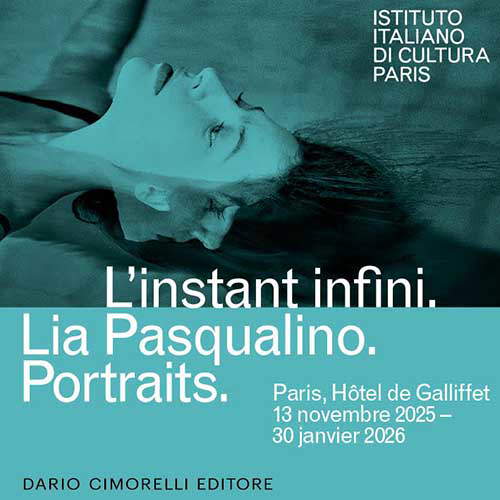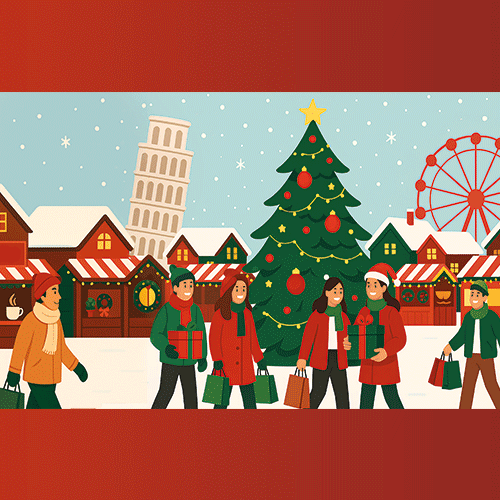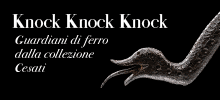
The strange summer of Nantes: a singular journey through contemporary art
Through August 31, 2025, Nantes invites you to an immersion in Étrange Été. An artistic journey that explores the city through installations that challenge perception, interrogate history and reflect on the human-nature relationship. A Nantes where art aims to transform the everyday into an experience out of the ordinary.
By Redazione | 29/07/2025 12:33
Once again this year, until August 31, 2025, the city of Nantes in France is transformed into the stage for Le Voyage à Nantes: L'Étrange Été, the art event that every year returns to enliven its streets. This year's edition, conceived by Jean Blaise, founder of the event, together with his project teams, invites the public to explore the city under the sign of "Etrangeté." It is a reading of Nantes intrinsically linked to its history and its contemporaneity, where the city itself orchestrates a kind of "heterogeneous cacophony" capable of leading the flâneur, if only he pays attention, on unexpected paths. The essence of this "strange" lies in the ability of artworks to orchestrate unlikely encounters, subverting established hierarchies and codes, just as happens in a carnival, where what is seen and its meaning may appear uncertain. Hybridization, displacement and storytelling become the artists' privileged tools for capturing the true mystery of the city.
Many themes are explored by this edition. They start with reflections on power and memory, a theme explored by Iván Argote and Willem de Haan. Argote, a Colombian artist whose work is articulated around these notions and that of identity, challenges dominant historical narratives by proposing alternative versions, often steeped in humor and poetry. For Nantes, in the pedestrianized Rue Joffre, he was captured by the perspective that opens onto the majestic column of Place Maréchal Foch from the église Saint-Clément. His work, Antípodos, consists of two bronze sculptures of backward-footed figures positioned at the ends of the pedestrian area of Rue Maréchal-Joffre. These anonymous figures defy gravity, "assaulting" both the facade of a banal building and the column of Louis XVI, one of the few monuments in France dedicated to him. Argote pushes the reflection further, creating an optical illusion that makes the sculpture of Louis XVI "disappear" through a mirror structure, a gesture that reconnects the work to the very history of the column, which remained without a statue for decades due to political instability between 1790 and 1823. This device invites a reconsideration of the presence of monarchical symbols in public space, refocusing attention on the changing city and its social dynamics. Similarly, Willem de Haan, a Dutch artist who investigates our relationship with public space and urban structures, proposes Latest Version for the historic Place Royale. His project actualizes the 19th-century monumental fountain by replacing the original allegorical statues with hyper-realistic figures of current residents of Nantes, chosen for their profession, their commitment and their connection to the city's transformation in the 21st century. Fourteen figures will embody the territory's five rivers and eight emblematic sectors of activity, reflecting Nantes' recent evolutions. The original sculptures will not be removed, but recontextualized in a structure that evokes museum reserves, highlighting the dialogue between past and present and the city's resilience.
Several artists then confront the relationship between man, nature and the living. Gloria Friedmann, whose work is steeped in ecological concerns and an ongoing dialogue between human, animal and nature, presents two installations. At the HAB Galerie, Combien de terres faut-il à l'homme? is inspired by Tolstoy's novella about human greed, inviting reflection on environmental problems and the dangers of modern civilization. The exhibition, an itinerary that gradually darkens, features works such as Le Regardeur with thousand-year-old ammonite eyes, and Cobaye, an earthen man with a giant head that prevents him from moving, surrounded by earthen spheres, a symbol of the insatiable human appetite. At the same time, in the Cour de l'hôtel de Châteaubriant, Carnaval de la famille Durand shows ten human-sized hybrid figures with exotic bird heads, a "new hybrid human/bird specimen" that recalls carnival traditions and the history of Nantes related to triangular trade and exoticism.
Prune Nourry, fascinated by creation myths and the origins and workings of the female body, brings Mothership to Place Graslin. This monumental sculpture, nearly 17 meters long, takes the form of upside-down boat hulls, evoking Nantes' port past as one of the oldest ports in France. Made of metal frames, the work is traversable, allowing the public to enter its "belly," a gesture reminiscent of the pre-Hispanic Temazcales, huts symbolic of regeneration. Éléonore Saintagnan, with Vies de bêtes at Passage Sainte-Croix, probes the relationships between reality and fiction, popular culture and philosophy through human-animal cohabitation. The exhibition includes Giant Fish, an immense hyper-realistic fish puppet that seems to have run aground, inspired by an anti-capitalist and anti-militarist parable, and a video showing it agonizing in an apocalyptic landscape, evoking an endless cycle of resurrection. Again, Laurent Tixador, an artist who describes himself as a "bricoleur and experimenter" and who explores the concept of the hut as a form of resistance and freedom, proposes Épilogue sylvestre (Terminus forêt - Retour aux forêts) focusing on the construction of "huts" with discarded materials, for example wood waste from recent prunings and storms, with the collaboration of architecture and fine arts students from Nantes. The work, exhibited at the Parc de Procé, will then be photographed and reproduced as a sticker on a streetcar that will circulate around the city. Space will also be given to the cduo Maison Pelletier Ferruel (Aurélie Ferruel and Stéphane Pelletier) leading to the Jardin des Plantes Trouver les égards. After flagging notable trees throughout the city in the 2024 edition, these decorative glass "jewels" inspired by nature and symbiotic creatures will be focused on the "mountain" of the Jardin des Plantes, in a conifer-rich sector with a privileged view of the entire garden. Hidden among the branches or suspended on a path, these jewels become an integral part of a landscape shaped by time, man and nature, inviting a sensitive exploration of this historic part of the garden.
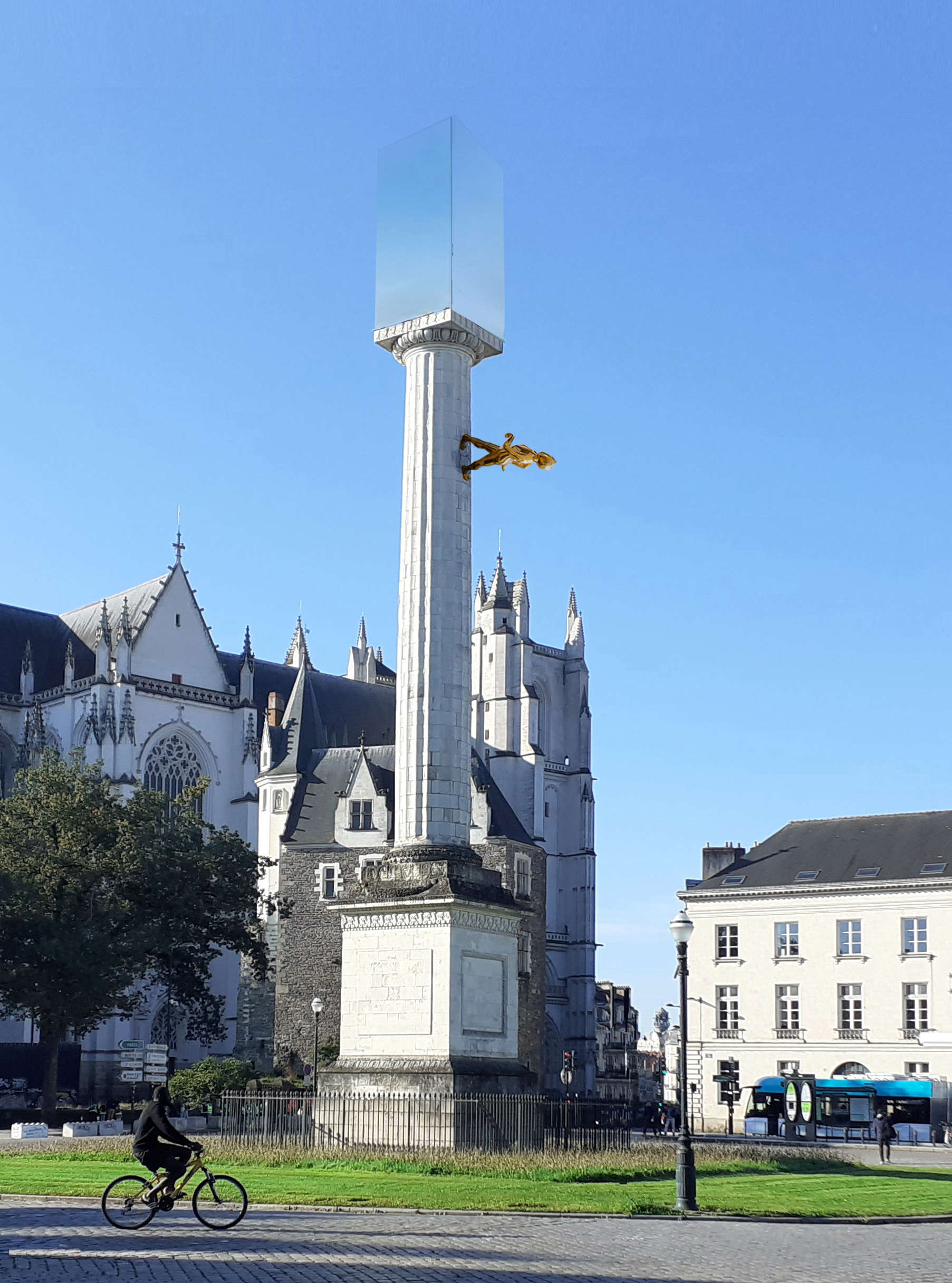
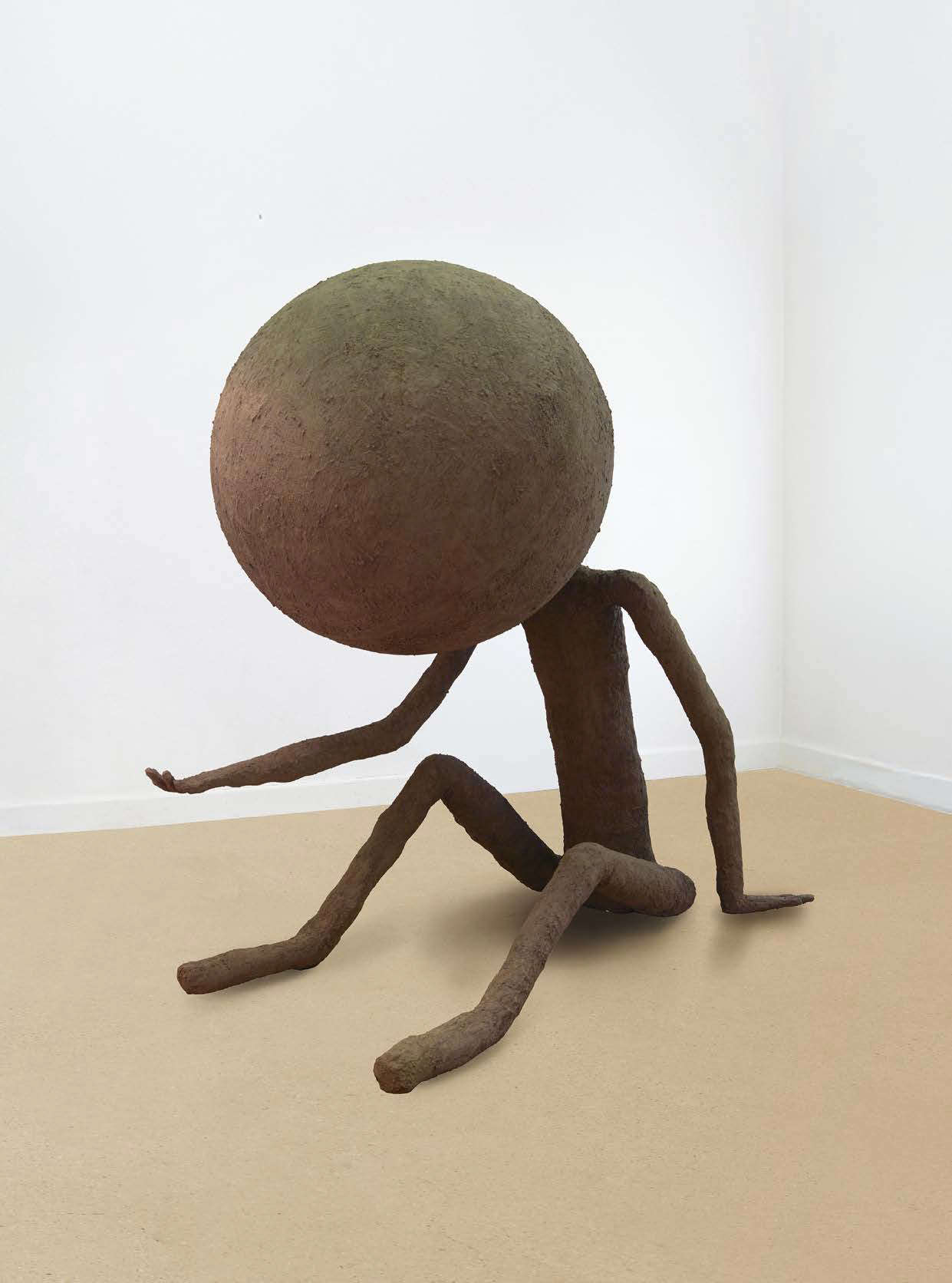
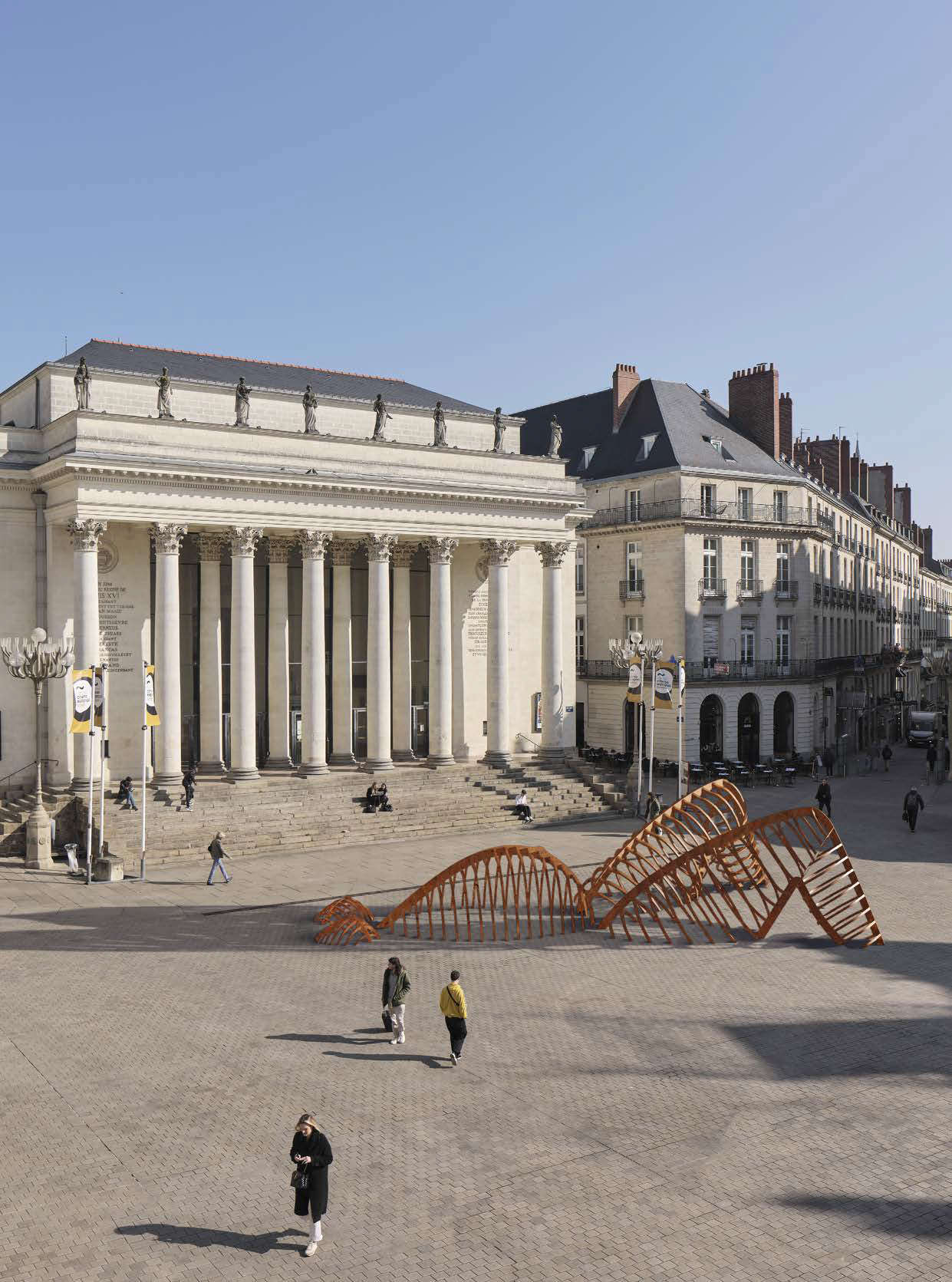
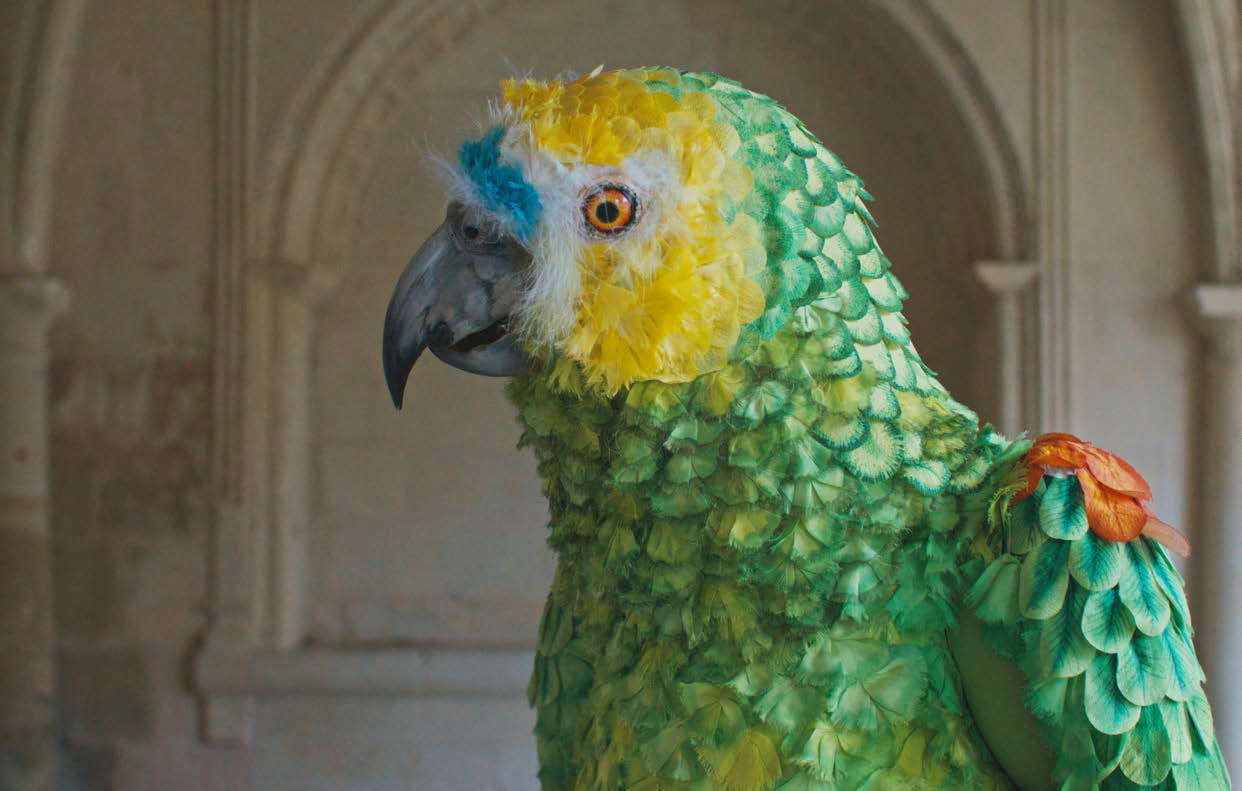
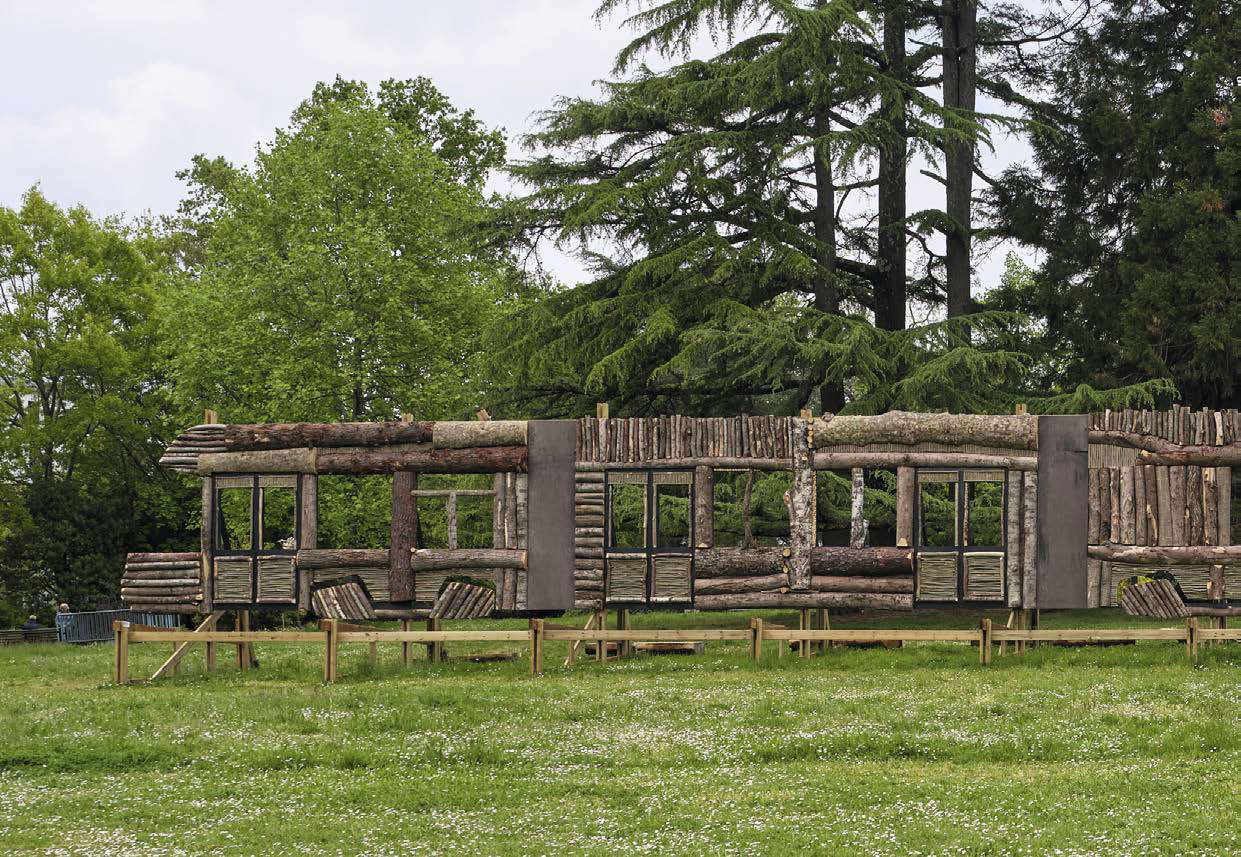
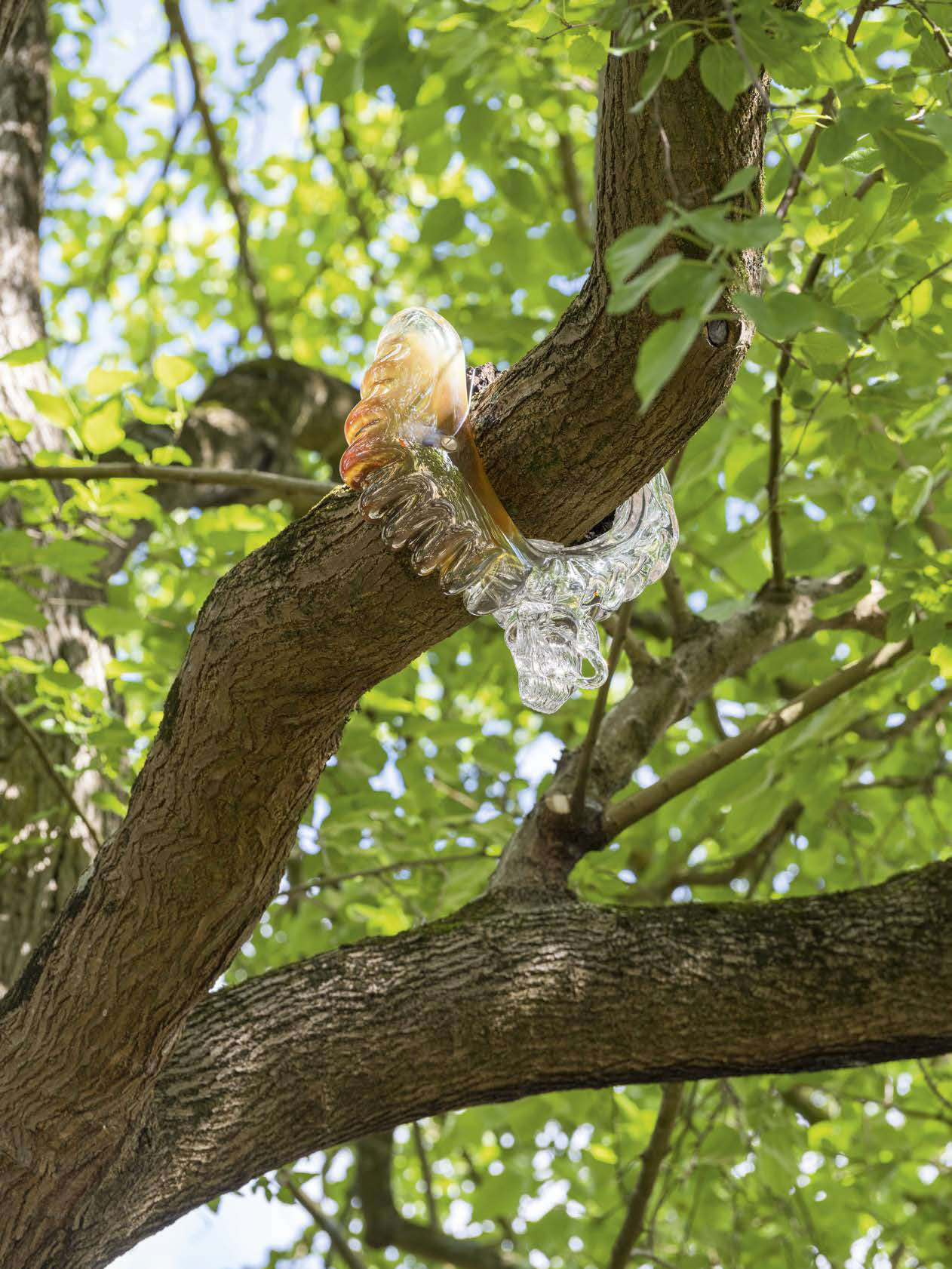
The "Etrangeté" also manifests itself in the reinterpretation of spaces and perceptions. Jenna Kaës transforms the Dispensaire Jean V of the Dobrée Museum, a valuable example of early 20th-century hospital architecture, into Aurarium, a contemporary reliquary. The installation explores mysticism and the materialization of the spiritual, drawing from the universe of filmmaker David Lynch and from the fantastical symbols of Nantes architecture, such as the decorations of the Château of the Dukes of Brittany, the Passage Pommeraye or the bestiary of the Palais Dobrée. Historical objects from the Dobrée Museum, such as the heart of Anne of Brittany (a goldsmith's box containing the heart of the deceased), coexist with new creations, recreating the codes of reliquaries and curio cabinets, establishing a dialogue between past and present. Flora Moscovici, with Peinture Tolérance Toujours on Rue de l'Héronnière, creates an in situ painting that dialogues with an Art Deco facade. The artist, known for her paintings that expand into the environment from the observation of details that stimulate the imagination. Extending the colors of the facade to the ground and plinths, the work, made with lime paints and pigments, evolves with light and time, fading under the effect of natural elements and the footsteps of passersby.
It continues with works by Romain Weintzem, a sculptor who interrogates domination and authority through works that combine humor and social criticism, and who presents two installations. At the Lycée Clemenceau, between Rue de Richebourg and Rue Clemenceau, La Mauvaise Troupe displays figures camouflaged with fanfare instruments on the walls of the high school. This work is a tribute to the subversive student group SARS and their magazine "En route mauvaise troupe," published in 1913, whose anti-militarist and unpatriotic actions caused a scandal and are considered the first act of surrealism. His second installation, Le Bruit des bottes, shows some 30 pairs of military boots progressing down the steps of a staircase, guided by clown shoes, while the owners remain invisible. The expression "Le Bruit des bottes" qualifies the rise of authoritarianism.
Aurélie Ferruel and Florentine Guédon, with Bras dessus, bras dessous at Parc des Oblates, reinvent the large-scale game of chess, transforming it into a space of collective exploration where competition gives way to cooperation. The artists, who have been studying forms of transmission and folk tales since 2019. The board is a sculpture/painting that represents a living cartography of local biodiversity, illuminating the natural dynamics that shape the land.
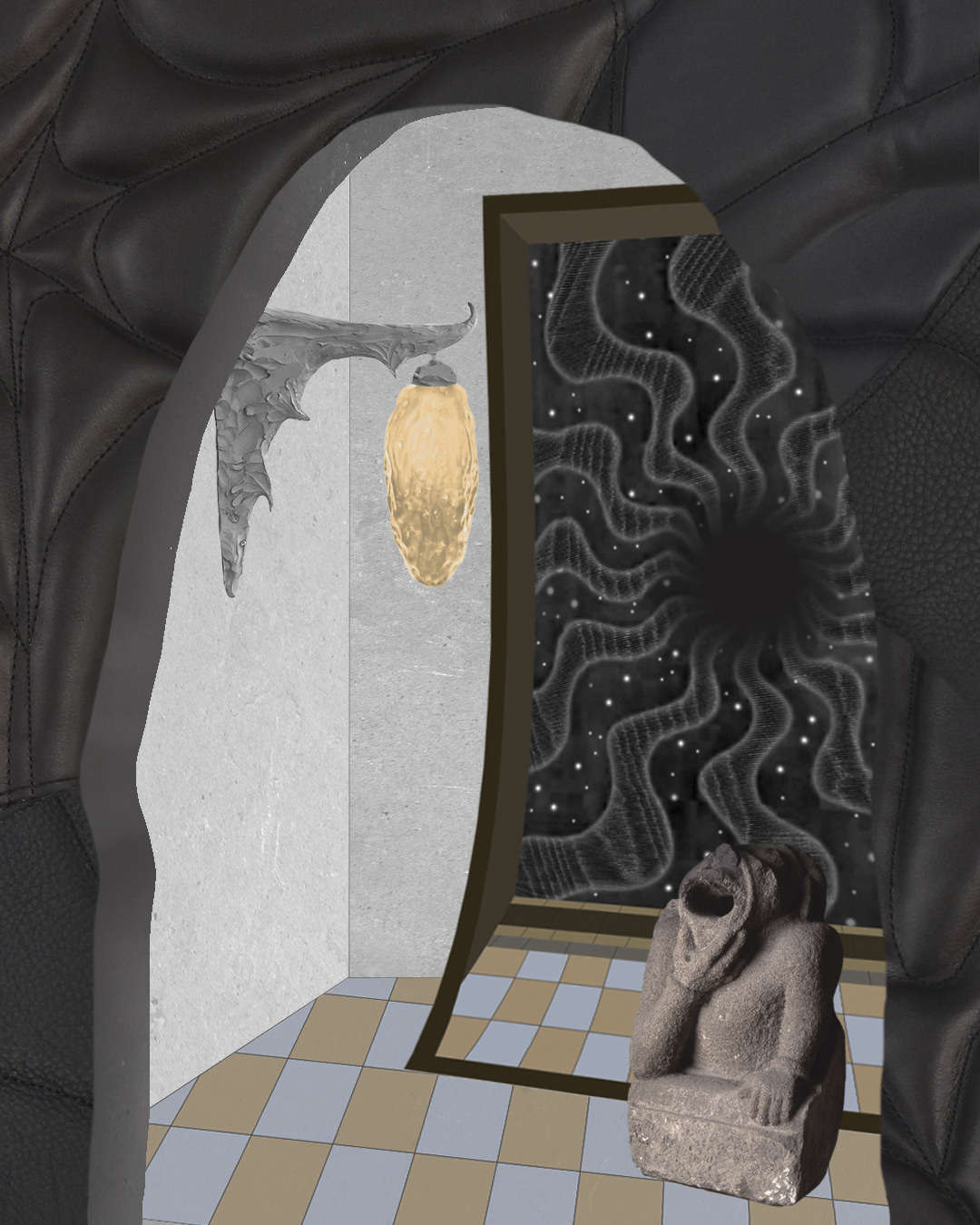
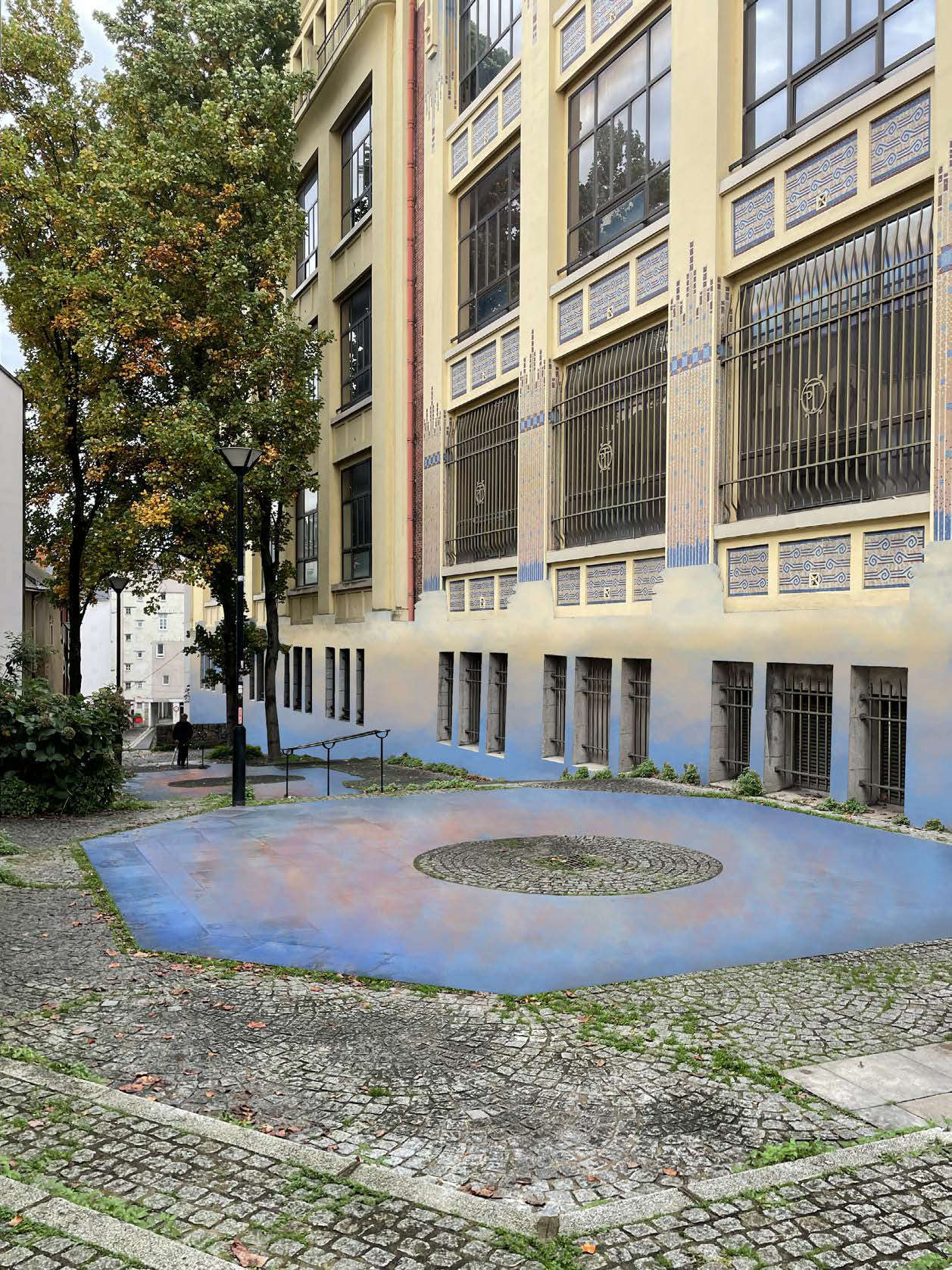
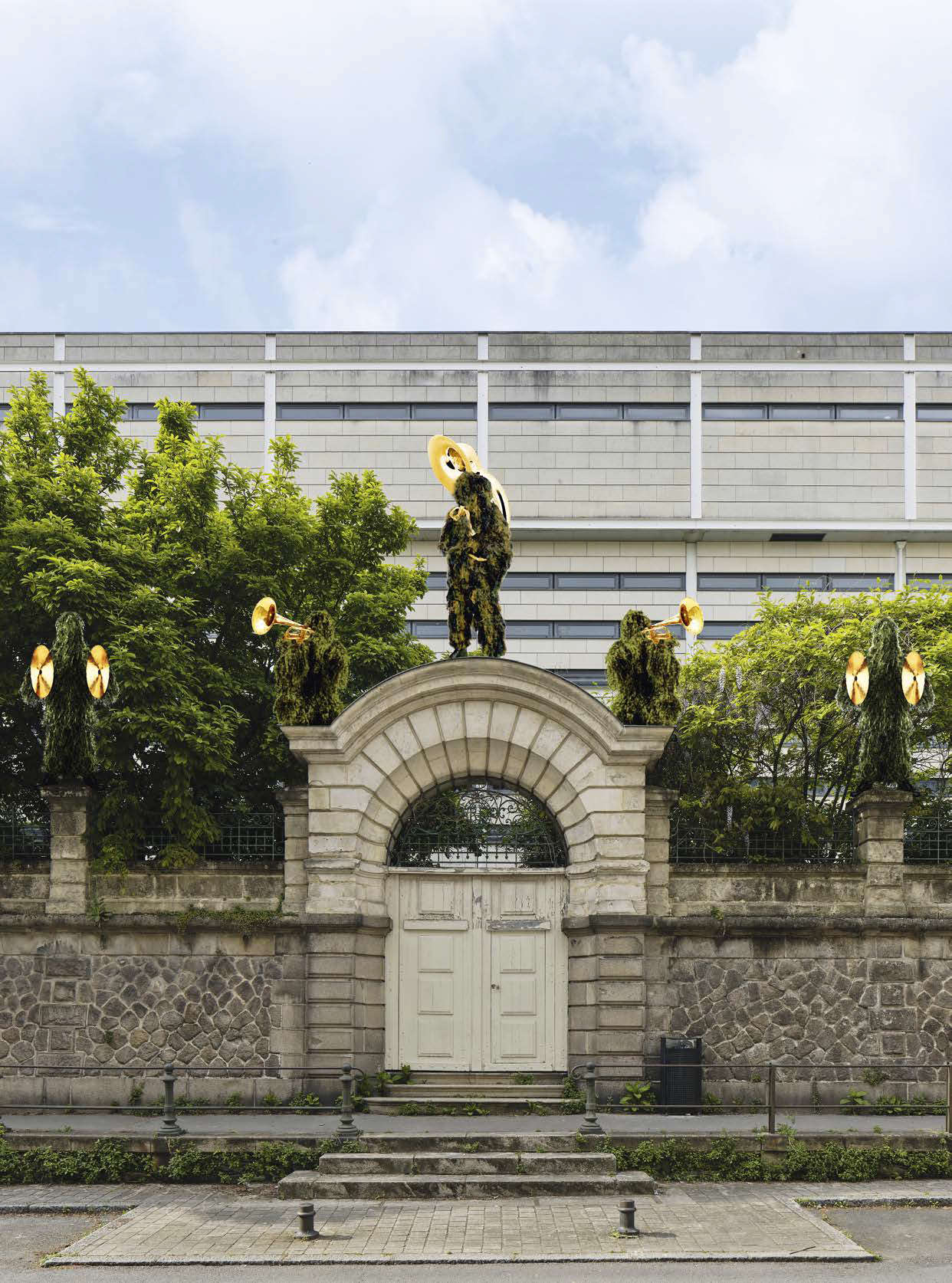
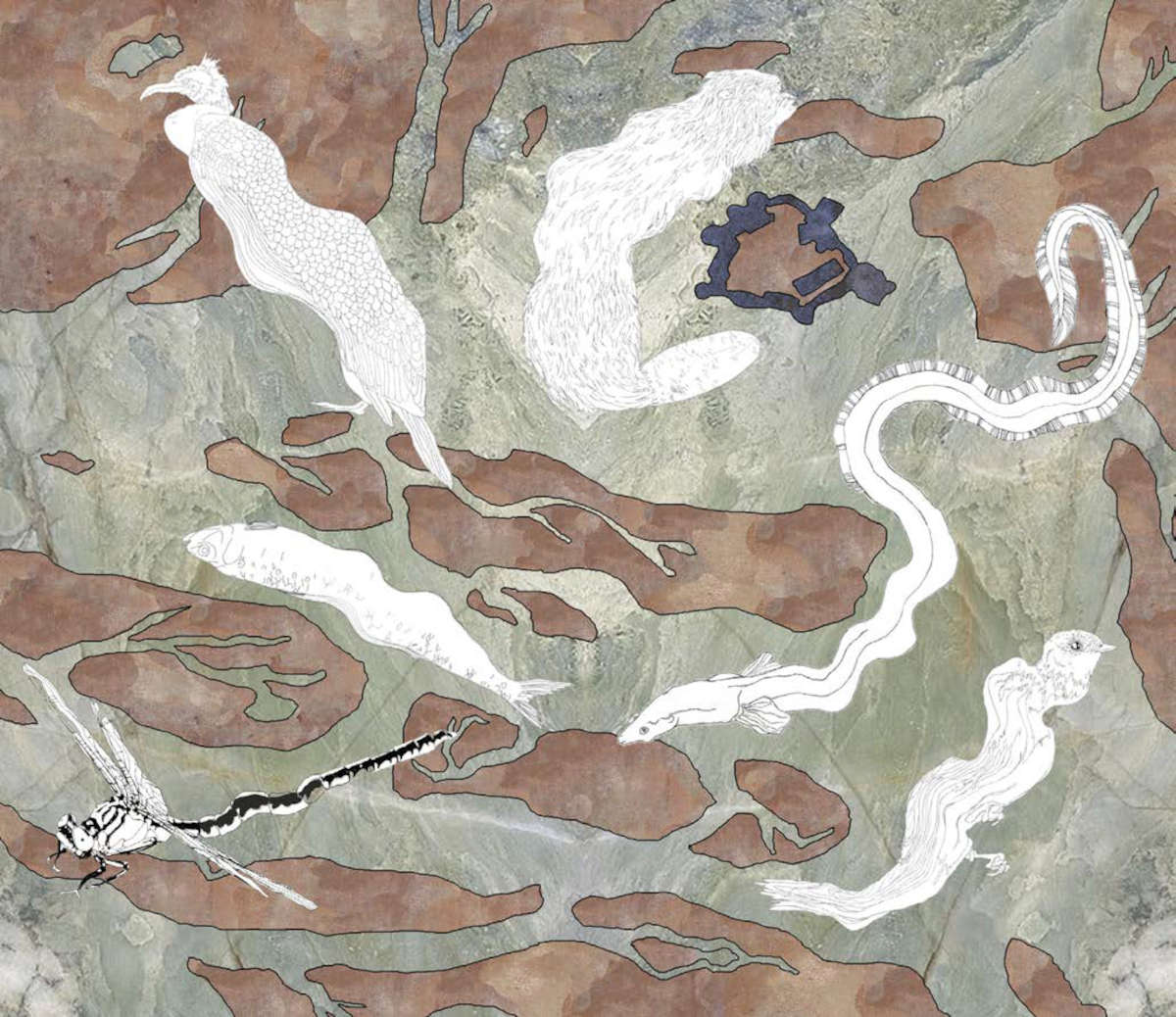
Summer in Nantes also brings several museum exhibitions. The Musée d'arts de Nantes, in collaboration with the Buffalo AKG Art Museum (USA), presents Electric Op. De l'art optique à l'art numérique, also on view through August 31, 2025. This exhibition explores the links between optical art (Op Art) of the 1950s and 1960s, with exponents such as Victor Vasarely, Yaacov Agam, and Bridget Riley, and video and computer art (new media art) to the present day. The goal is to show how Op Art, considered the first aesthetics of the information age, has influenced contemporary creation and how artists of the movement have used new technologies to amplify their creative possibilities. The exhibition brings together more than 80 works, including paintings, sculptures and videos, highlighting the connections between these artistic movements.
Le Lieu Unique, on the other hand, hosts In silentio, an exhibition by Jeanne Vicerial and Claire Marin, through Aug. 31, 2025. The exhibition stems from the encounter between weaver Jeanne Vicerial and philosopher Claire Marin, who explore the secret, inner whispers and words produced by silence. Through enigmatic textile sculptures, the exhibition presents hybrid figures that escape the categories of gender or species, like proud and mute sentinels, questioning our bodies and their transformations, and whether they belong to the past or the future.
L'Île de Nantes comes alive with Campus Créatif, a pathway for schools that reveals the backgrounds of innovation and creation in the face of questions of environmental and social transition.ENSA Nantes Université exhibits Notre deuxième maison, an intimate immersion in the workspaces of architecture students that tell the story of the pedagogical factory of tomorrow's architect. L'École des Beaux-Arts Nantes Saint-Nazaire presents All Over, showing creations by final-year students inspired by a study trip to Marfa, Texas, as well as works by Eugénie Zély and Clément Laigle, and selections of work from public courses. Halle 6 Ouest - Nantes Université unveils Ceci n'est pas un pont, the fruit of an interdisciplinary collective work: a Leonardo da Vinci bridge under construction, a symbol of future production methods, displaying all the stages of reflection, conception and fabrication. Les Écoles Créatives ESMA-CinéCréatis invite to L'Étrange Atelier du cordonnier, an installation that plays with the illusion of 3D printed shoes that evoke craftsmanship without the wear and tear of leather.
Finally, the Château des ducs de Bretagne hosts the exhibition Hokusai, chefs-d'œuvre du musée Hokusai-kan d'Obuse, through Sept. 7, 2025. This exhibition, in partnership with the Hokusai-kan Museum of Japan, focuses on themes dear to the great Japanese master, such as his relationship with nature, water, waves, Mount Fuji (his favorite subject throughout his life), and the traditional figures of Edo-era beauties and Kabuki actors. An opportunity to admire a significant number of original works, drawings and paintings, some of which are being exhibited for the first time in the West. Nantes, with its history and constant evolution, is thus intended to become fertile ground for an artistic dialogue that stimulates perception and invites the questioning of conventions, transforming the summer stroll into a kind of adventure in the heart of contemporary "strangeness."


